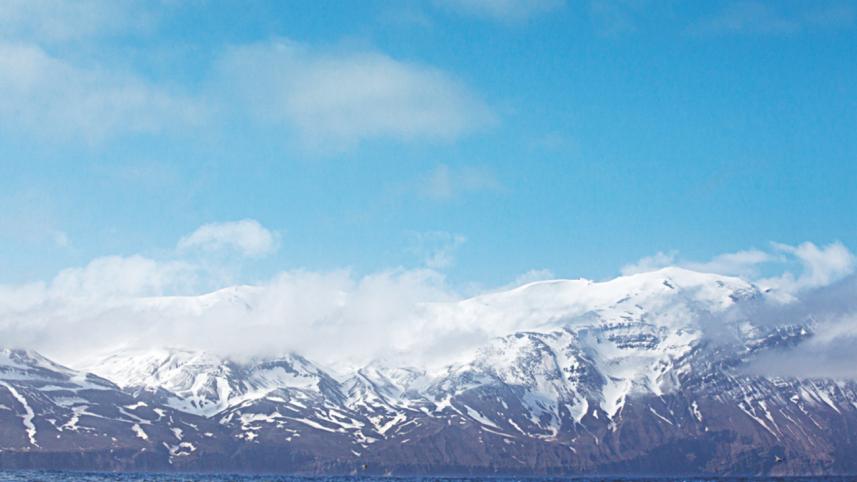In Iceland

I visited Iceland last month. I had been there once before in 1986. It was not on the tourist map then, but its sheer beauty had left me with a desire to return.
The island nation has only 323,000 people living in its 40,000 square miles. Best known for its stark, volcanic landscape including geysers, waterfalls, geothermal springs, glaciers and, of course, volcanoes, it is also the most peaceful country in the world.
Iceland was settled by Norse settlers about one thousand years ago. Its parliament (Althing) is one of the oldest in the world, dating from 972 A.D. After several centuries of various forms of colonialism, Iceland attained full independence from Denmark in 1944. The Icelandic language boasts a Nobel prize winner in literature (Halldor Laxness.) Just about everyone speaks English well. The nation loves books and a discussion with my friend in publishing revealed that Plato translated into the Icelandic is very popular.
Surrounded by the north Atlantic's bountiful waters, Iceland counts fisheries as its main resource. After an economic collapse in 2008, its currency devalued. This made the country cheaper for tourists who now arrive in droves to see its natural beauty. Tourism is thus Iceland's second largest income source.
A ring road circumnavigates this island. Many tourists opt for a weeklong drive around it after landing in Reykjavik. However, my destination was Lake Myvatn: I wanted to photograph the lake's famed water birds. After reaching Reykjavik from London I took a domestic flight to Akureyri on the north east. From there I rented a car and drove two hours to Myvatn.
The drive took me through some outstanding scenery. Later, when I mentioned to my friend about the deep, pulsating blue of the Icelandic sky and ocean, he remarked, "many people say that." As I drove with the ocean on one side and mountains on the other, the weather changed rapidly, going from cloudy to rains to sunny, sometimes in a matter of minutes, creating ever-changing vistas.
An unusual feature of Icelandic landscape is the lack of trees. The island once had old-growth birch forests, but the settlers cleared them to make room for farms. Today there are smaller groves of birch and aspen, but there is a distinctive lunar look to the landscape.
Myvatn turned out to be a sprawling lake with many types of beautiful ducks. The smaller, red-breasted phalarope was a bonus. It kept on rotating 360 degrees on the water looking for food and allowed me up close. I saw whales off the port of Husavik (covered in an earlier column.) Icelandic horses were common. They are special because compared to other horses they have two extra gaits.
I flew back to Reykjavik, one of the smallest capitals of the world. It attained fame as the site of the Spassky-Fischer chess games at the height of the Cold War (Fischer is buried in Reykjavik.) The city centre is graced by a beautiful lake while colourful rooftops can be seen on the horizon. There are very few high-rises. Interesting architecture includes Harpa, the concert hall designed by Olafur Eliasson, which modulates with rhythmic lighting at night. A street side stand sold delicious hot dogs – garnished with crunchy fried onions – which Bill Clinton had enjoyed.
Much too soon, it was time to take my leave of this amazing land and its friendly people. I hope to return someday.
www.facebook.com/tangents.ikabir



 For all latest news, follow The Daily Star's Google News channel.
For all latest news, follow The Daily Star's Google News channel.
Comments